Ceramic knick knacks are beloved decorative items that bring charm and character to any space. Keeping them clean not only enhances their aesthetics but also preserves their longevity, ensuring they remain a treasured part of your home for years to come. However, cleaning delicate or antique ceramics can be challenging, as improper methods or abrasive materials can lead to damage, chipping, or fading.
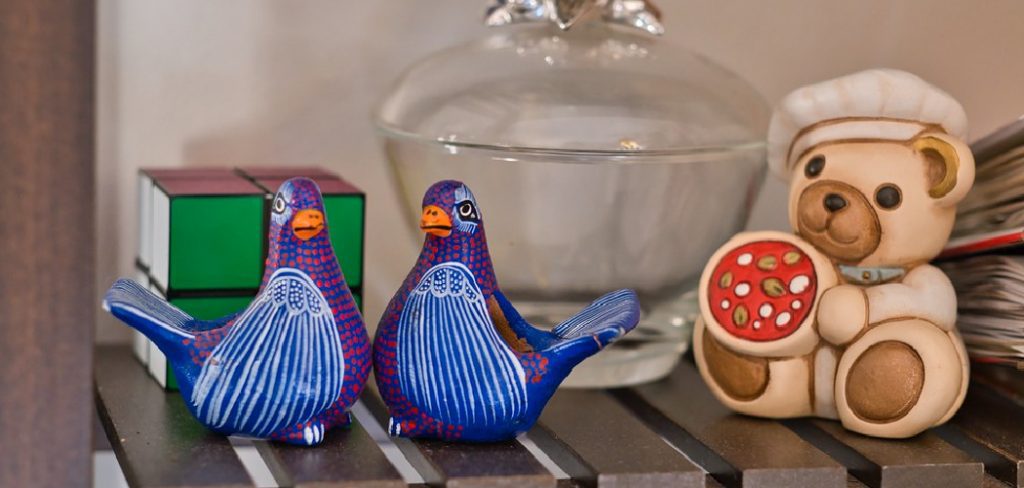
To avoid such issues, it is essential to use safe and effective cleaning techniques tailored to the specific needs of your ceramics. This article is designed to guide you through how to clean ceramic knick knacks properly, offering tips and advice to help maintain their beauty while protecting their delicate surfaces. Whether you’re tackling everyday dust or dealing with tougher stains, this comprehensive guide will ensure your ceramics are treated with the care they deserve.
Understanding Different Types of Ceramic Knick Knacks
Ceramic knick knacks come in various types, each with unique characteristics and care requirements. Some common types include porcelain, which is prized for its smooth, delicate surface and translucency, making it ideal for decorative figurines and intricate designs. Earthenware, on the other hand, has a more porous and rustic quality, often found in handmade trinkets and vintage ceramics. Stoneware, known for its durability and sturdiness, is commonly used for functional decorative items such as vases or pots.
The finish and glaze of ceramics also play a crucial role in determining how they should be cleaned. A glossy finish, often sealed with a thick glaze, is generally more resistant to staining and can tolerate gentle wiping with damp cloths. However, matte finishes may absorb dirt more easily and require extra care during cleaning to avoid altering their texture or appearance.
Additionally, the age and delicacy of your ceramic knick knacks must be considered. Antique or vintage ceramics, particularly those that are hand-painted or adorned with intricate details, are more fragile and susceptible to damage. These pieces demand a gentle cleaning approach, using soft brushes or mild cleaners to preserve their charm and historical value.
Gathering Cleaning Supplies
When cleaning ceramics, having the proper tools and products is essential to ensure their longevity and appearance.
Basic Cleaning Tools
To start, gather soft brushes, microfiber cloths, and cotton swabs. These tools are ideal for gently removing dust and grime without scratching the surface. Mild detergents diluted in warm water are also excellent for basic cleaning, especially on newer or sturdier ceramics.
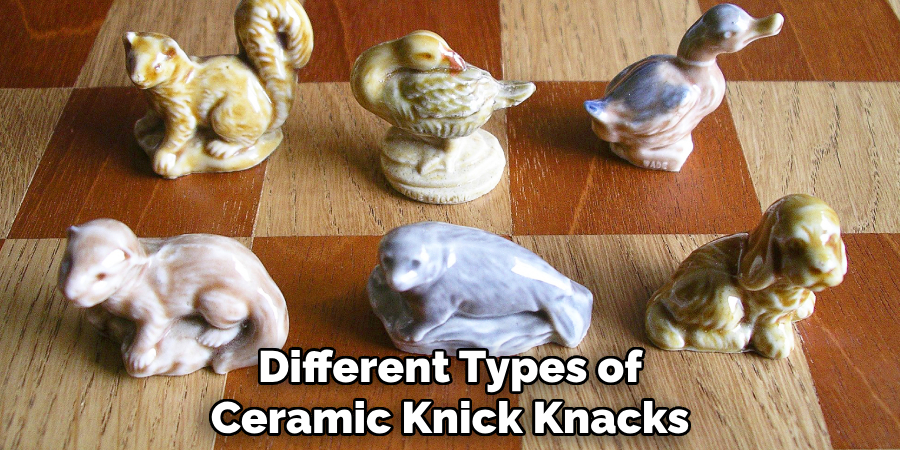
Specialized Cleaning Products
For more delicate or antique pieces, consider using gentle cleaning solutions. A diluted vinegar mixture works well for removing stubborn stains without causing damage. Baking soda paste can be used sparingly to tackle tougher spots, but only on durable, unglazed surfaces. Alternatively, specialized ceramic cleaners are designed to handle intricate or fragile items safely.
Items to Avoid
Avoid harsh chemicals like bleach or ammonia, as they can strip finishes and fade colors. Steer clear of abrasive scrubbers or steel wool, which can scratch and damage ceramics. Additionally, high-pressure water sources, such as power washers, should be avoided to prevent cracking or chipping.
How to Clean Ceramic Knick Knacks: General Cleaning Procedure
Proper cleaning techniques can preserve the delicate beauty and integrity of ceramic knick knacks. Follow these steps for safe and effective cleaning:
Step 1: Dusting
Begin by using a soft brush or a microfiber cloth to gently remove surface dust. This prevents scratches during washing and ensures dirt particles don’t spread into crevices. Focus on intricate details or grooves, using small tools like a clean makeup brush if necessary to reach tight spaces.
Step 2: Washing
Prepare a mild soap solution by mixing a few drops of gentle dish soap with warm water in a bowl. Hand wash the ceramic item carefully using a soft sponge or cloth, ensuring a light touch to prevent over-scrubbing. For intricate designs or delicate surfaces, avoid applying too much pressure. Delicate or porous ceramics should never be soaked, as prolonged exposure to water can weaken their structure or loosen glazes.
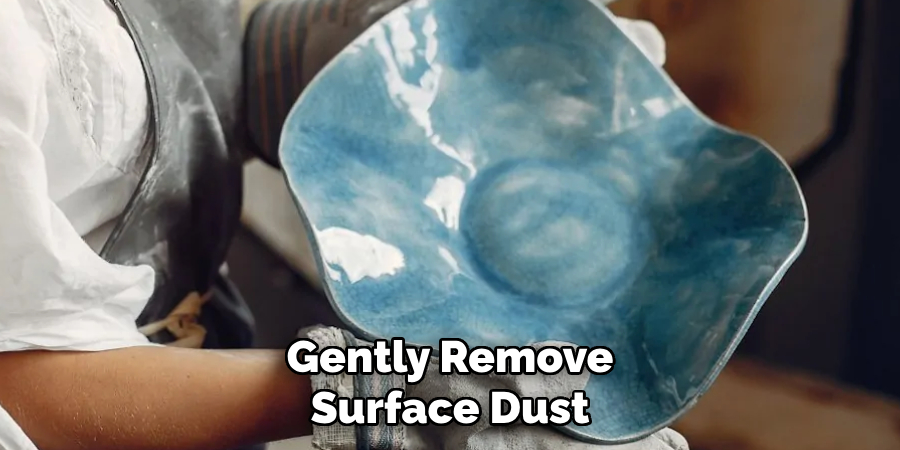
Step 3: Rinsing and Drying
Rinse the ceramic thoroughly with clean water to remove any soap residue. Avoid soaking the item, as this can cause water penetration. Instead, pour or splash water over the surface while holding the piece securely. After rinsing, pat the ceramic dry with a soft cloth, being especially careful around fine detailing. For best results, allow the item to air dry completely in a safe, shaded space before returning it to its display area. Proper drying deters streaks and prevents moisture damage.
Cleaning Stubborn Stains or Dirt
Baking Soda Paste Method
For persistent stains on ceramics, a baking soda paste provides an effective and gentle solution. To create the paste, combine three parts baking soda with one part water, mixing until it forms a smooth consistency. Apply the paste directly to the stained area using your fingers or a soft cloth, ensuring even coverage.
When scrubbing, use small circular motions with a microfiber cloth or non-abrasive sponge to avoid scratching the surface. For particularly delicate glazes, test the paste on an inconspicuous area beforehand. Once the stain is lifted, rinse thoroughly with clean water and dry the item as described earlier.
Vinegar Solution for Mineral Deposits
Hard water stains and mineral buildups can be treated with a diluted vinegar solution. Mix equal parts white vinegar and water in a small bowl. Dampen a soft cloth or sponge with the solution and gently wipe the affected area.
For tougher mineral deposits, allow the vinegar solution to sit on the surface for a few minutes before scrubbing. Be cautious when using vinegar on delicate glazes, as excessive exposure may dull their finish—always test in a hidden spot first. After cleaning, thoroughly rinse the ceramic with water and dry completely to remove any residual vinegar.
Using Toothbrushes and Cotton Swabs
For tight corners and intricate crevices, utilize soft-bristled toothbrushes or cotton swabs. Lightly moisten the tool with water, baking soda paste, or the vinegar solution, depending on the type of stain you’re addressing.
Gently scrub the difficult-to-reach areas without applying excessive pressure. Proper use of these tools ensures detailed cleaning while preserving the integrity of the ceramic.
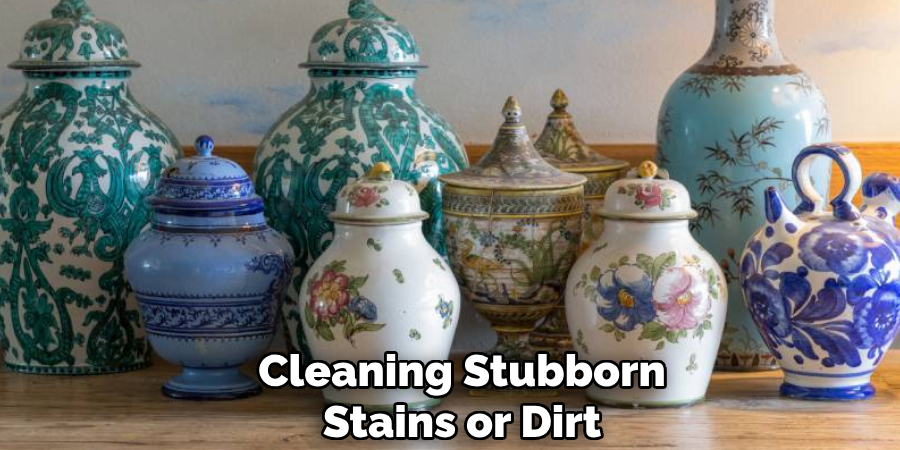
Special Care for Antique or Hand-Painted Ceramics
Avoiding Harsh Chemicals
Antique or hand-painted ceramics often feature delicate finishes and intricate designs that harsh cleaning agents can damage. To preserve their beauty and integrity, always use mild cleaning solutions such as diluted dish soap or water with a small amount of vinegar. Abrasive cleaners or scrubbing tools should be avoided, as they can strip paint, damage glazes, or cause scratches on the surface. A gentle approach ensures the longevity of these unique items.
Handling with Extra Care
When cleaning fragile ceramics, it’s important to handle them with extra care to avoid accidental breakage. Use both hands to support the item, especially around delicate or protruding parts such as handles or fragile edges. Consider placing a soft cloth or padding underneath the work area to cushion the ceramic in case of slipping. Taking these precautions minimizes the risk of damage during cleaning.
Professional Cleaning Options
For valuable or severely soiled antique ceramics, consulting a professional restoration or conservation expert is recommended. They possess specialized tools and knowledge to address tough stains or repair minor damages while preserving the item’s historical and aesthetic value. Professional cleaning is particularly advisable for irreplaceable pieces or those of significant cultural or sentimental importance.
Preventive Tips to Keep Ceramic Knick Knacks Clean
Regular Dusting Routine
Establishing a regular dusting routine is crucial for maintaining the cleanliness of ceramic knick-knacks. Use a soft, dry cloth, microfiber duster, or a soft-bristled brush to remove dust and particles from surfaces and intricate details gently. Regular dusting prevents dirt buildup, making it easier to maintain the item’s appearance over time.
Proper Display and Storage
Proper display and storage play a significant role in preserving ceramic items. Place the knick-knacks in areas that are free from direct sunlight, as prolonged exposure can cause fading or discoloration. Avoid placing them in areas with high humidity, which can lead to cracks or mold growth. Dust-free cabinets or enclosed shelves are ideal for display, offering protection from environmental pollutants and accidental damage.
Protective Coatings
For certain ceramic pieces, applying a protective coating may be beneficial. Use specialized protective sprays or sealants designed for ceramics to add a layer of defense against dust and moisture. Ensure that the coatings are suitable for the specific type of ceramic and avoid using them on antique or delicate pieces without consulting a professional. Always follow the manufacturer’s instructions for safe and effective application.
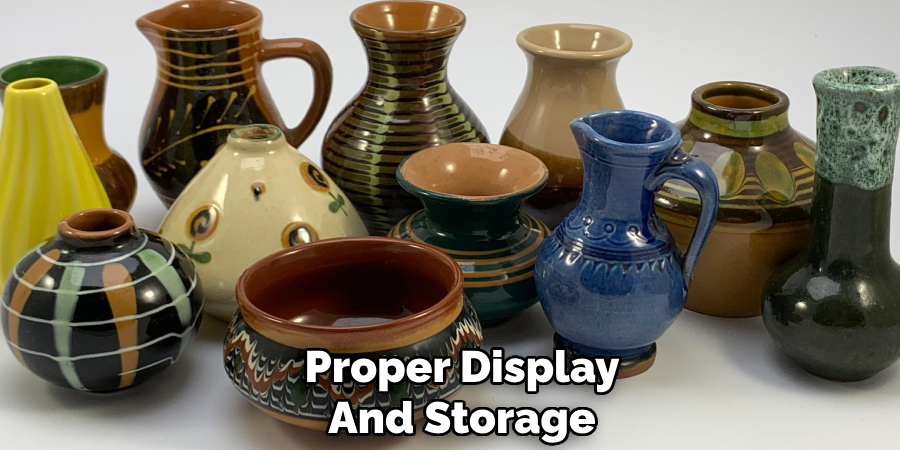
Common Mistakes to Avoid
Using Abrasive Materials
Scrubbing ceramics with rough tools such as steel wool or abrasive pads can scratch their surfaces, damaging the glaze and paint. Opt for soft sponges or cloths to clean your ceramics gently and preserve their finish.
Soaking for Long Periods
Prolonged soaking can lead to water damage, particularly for older or handmade ceramics with porous materials. Additionally, prolonged exposure to water can weaken the adhesives used in assembled pieces, potentially leading to deterioration over time.
Using Harsh Chemicals
Harsh cleaners like bleach or strong detergents have the potential to discolor ceramics and cause irreparable damage to their surfaces. Always choose mild, pH-neutral detergents or cleaners specifically designed for delicate materials.
Ignoring Fragile Details
Overlooking delicate features or intricate designs during cleaning can result in chips, cracks, or breaks. Handle such areas with extra care and consider using soft brushes for detailed cleaning to avoid accidents.
Conclusion
By following these best practices, you can ensure the safe cleaning and preservation of your ceramic treasures. Always opt for mild, pH-neutral cleaners, and avoid harsh chemicals that could damage the surface. Pay special attention to fragile details, using soft brushes or cloths to handle intricate designs delicately.
Incorporating a regular cleaning routine will not only maintain their beauty but also prolong their lifespan. Remember, learning how to clean ceramic knick knacks with care is essential to preserving their charm and sentimental value for years to come. Treat your ceramics with the attention they deserve to keep them looking their best.
Specialization:
- Master of wheel-throwing, hand-building, and advanced glazing techniques
- Focus on creating both functional pottery and decorative art pieces
Recognition:
- Celebrated by collectors and art enthusiasts for creating one-of-a-kind pieces that blend artistry with functionality
- Participates in local and national exhibitions, earning accolades for his innovative designs and craftsmanship
Passion:
- Deeply committed to exploring and pushing the boundaries of ceramic artistry
- Continuously experiments with new materials, firing techniques, and artistic concepts to evolve his craft
Personal Philosophy:
- Believes in the transformative power of art, aiming to evoke emotions and connections through his ceramic creations
- Advocates for sustainability in ceramics, using eco-friendly materials and practices whenever possible


